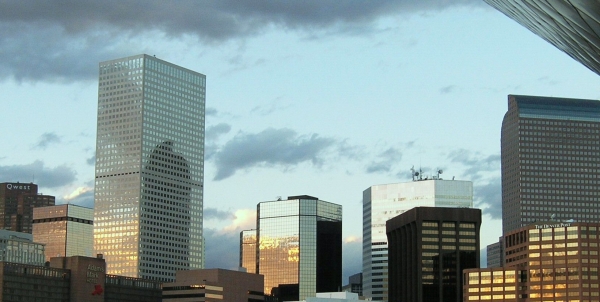Denver Urbanism: Denver’s Downtown apartment construction boom

For those of you who live, work or hang out in central Denver, you may have noticed significant multifamily residential development going on. In other words: a ton of new apartment buildings being built in and around Downtown. So what’s up with that?
If you’re looking to rent close to Downtown, this is good news. The apartment vacancy rate in Denver is currently very low – around 5 percent – so it can be difficult to find a decent place to rent in the city.
 Denver’s low vacancy rate can be attributed to three factors: First, for most of the 2000s before the recession, for-sale condo developments were the big thing, leaving less rental apartment construction than normal. Then, during the recession when little housing of any kind was built, Denver was number one in the country for in–migration of 25 to 34 year olds. (The explanation seemed to be: If you’re going to be unemployed anyway, you might as well live in a cool place!) Finally, a 2011 national study found that 88 percent of the Millennial generation (those born between 1981 and 2000) now coming of age prefer to live in urban areas rather than suburbs. These factors where a perfect storm of pent–up demand for rental housing in Denver’s urban core.
Denver’s low vacancy rate can be attributed to three factors: First, for most of the 2000s before the recession, for-sale condo developments were the big thing, leaving less rental apartment construction than normal. Then, during the recession when little housing of any kind was built, Denver was number one in the country for in–migration of 25 to 34 year olds. (The explanation seemed to be: If you’re going to be unemployed anyway, you might as well live in a cool place!) Finally, a 2011 national study found that 88 percent of the Millennial generation (those born between 1981 and 2000) now coming of age prefer to live in urban areas rather than suburbs. These factors where a perfect storm of pent–up demand for rental housing in Denver’s urban core.
The downside? A lot of the new rental housing is expensive. Many new projects are targeted at $2 per square foot, meaning that if you want to rent a 1,000 square-foot apartment, you’ll pay $2,000 a month.
The upside? What you pay for housing can be offset by lower transportation costs. People often underestimate the cost of transportation, which is second only to housing in the average person’s living expenses. Your car payment, fuel, routine maintenance, repairs, insurance, parking, taxes, fines and licensing fees, it really adds up. Living near Downtown means a better chance of being able to bike, walk, or take transit to your job or social life, saving money and offsetting the cost of living in the city center. Fortunately, options like Denver B-cycle, car-sharing, and Denver’s expanding transit options (RTD’s West Line opens this month!) make it increasingly easier to get around without having to drive.
New housing in the urban core provides other benefits. There’s been a chicken-and-egg conundrum for many years for Denver’s potential urban dwellers: Retailers that sell the goods Downtown residents need – groceries, home furnishings and general household items – often won’t locate a store in an area without enough “rooftops” nearby. But unless those residential–supportive retailers are already there, many people are hesitant to move nearby. The current housing boom in Downtown Denver – more than 6,000 residential units completed or under construction since the start of 2012 – may put us past the tipping point where more retailers will open shop in the Downtown area, stimulating more demand for housing, which will encourage more retailers to locate Downtown, and so on.
Every day, more people are choosing an urban lifestyle.
Ken Schroeppel is the founder of Denver Infill and Denver Urbanism. r More at DenverInfill.com.
What's Your Reaction?
Ken Schroeppel is a faculty member of the College of Architecture and Planning at the University of Colorado Denver. He teaches in the Master of Urban and Regional Planning program. Ken is also the founder of the DenverInfill and DenverUrbanism website and blogs, which offer aspects of sustainable design and urbanism in the Mile High City. Find them at DenverInfill.com.




